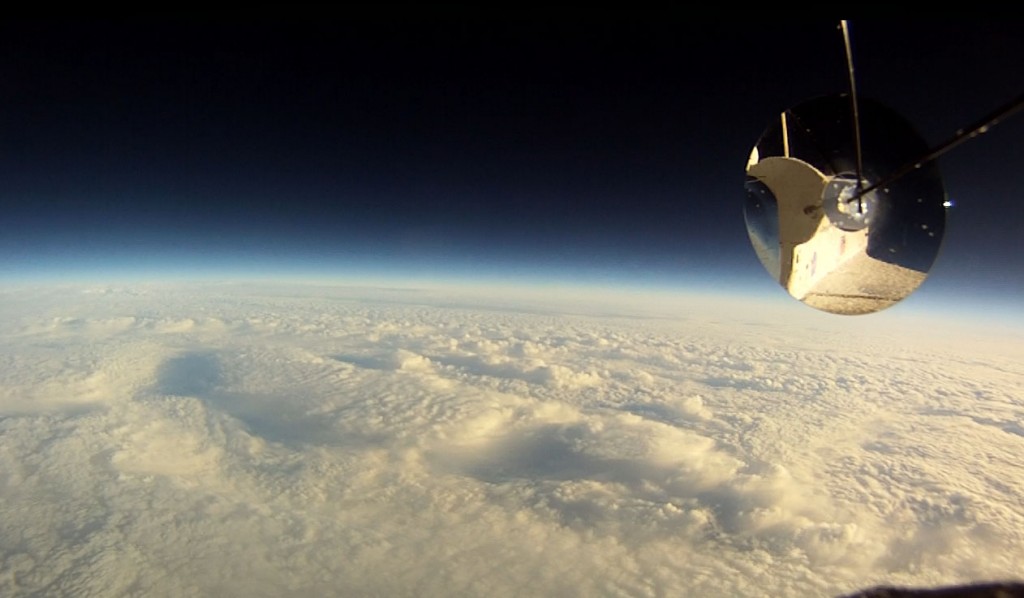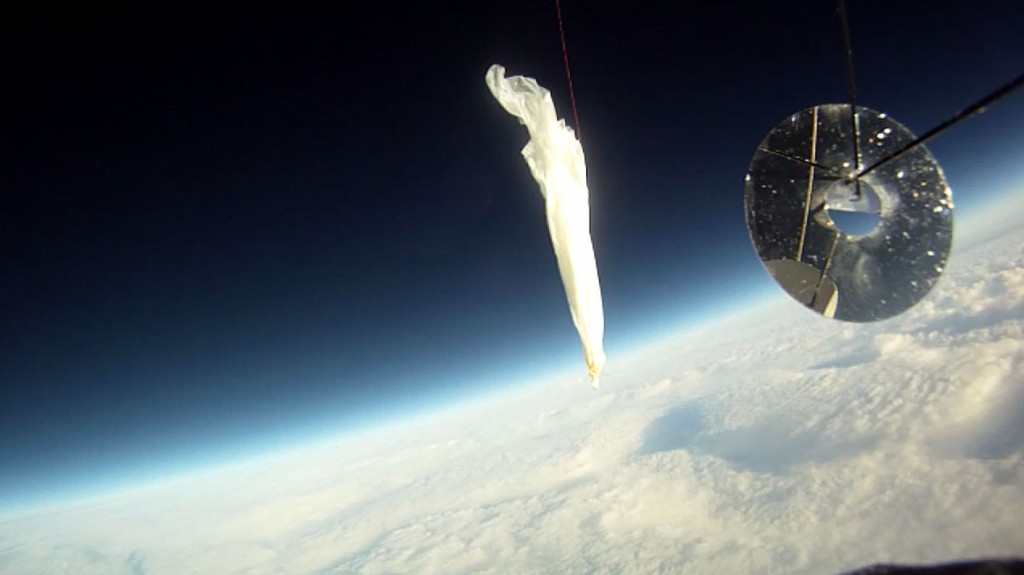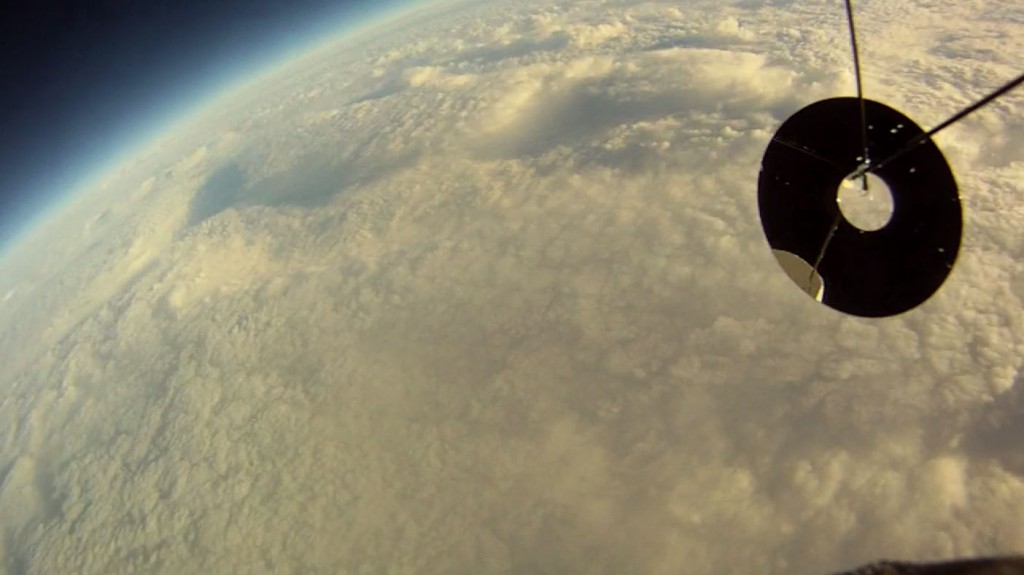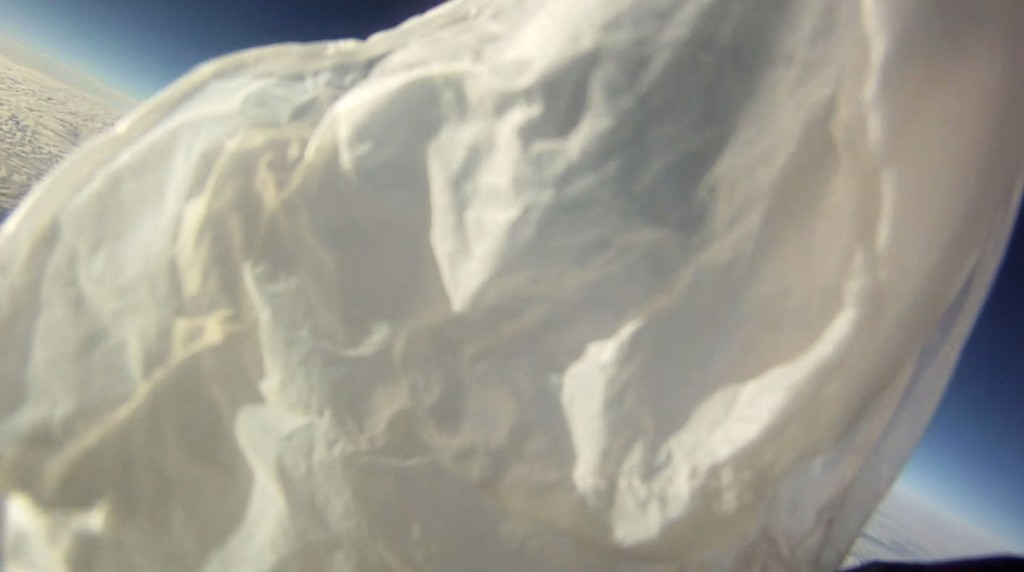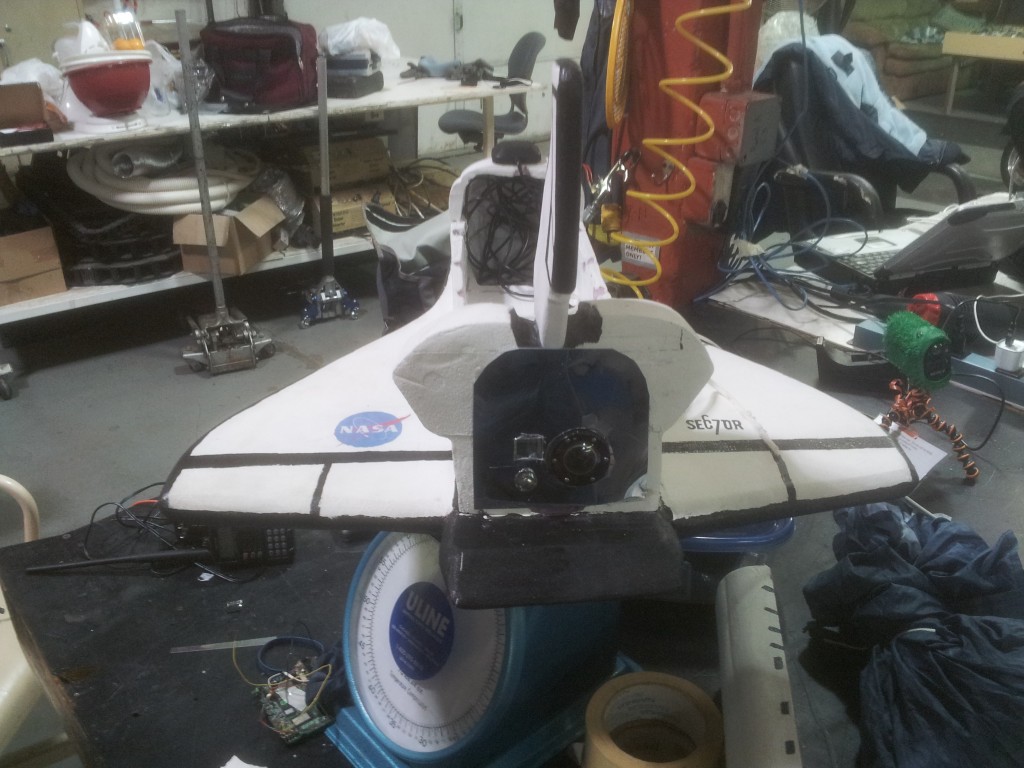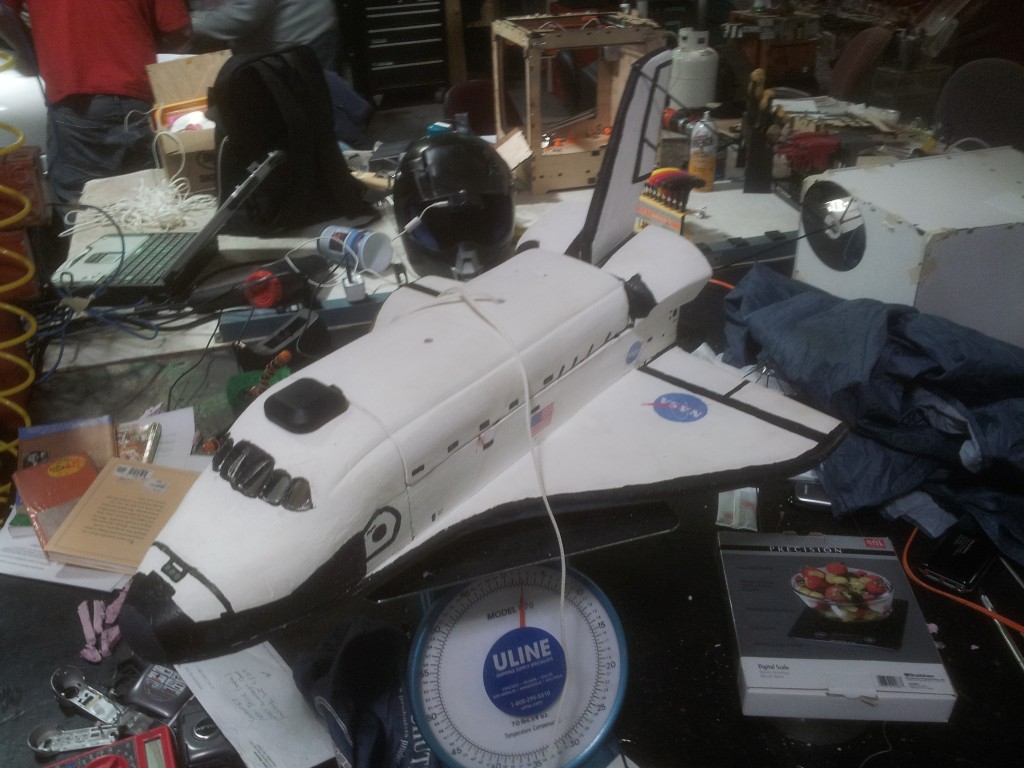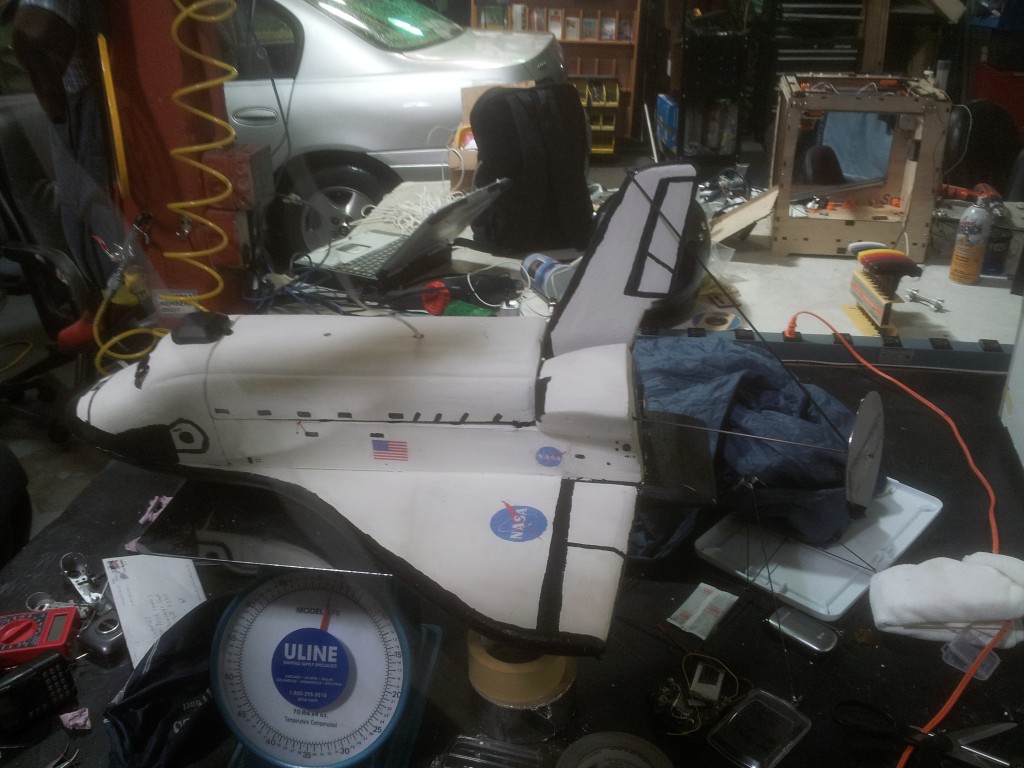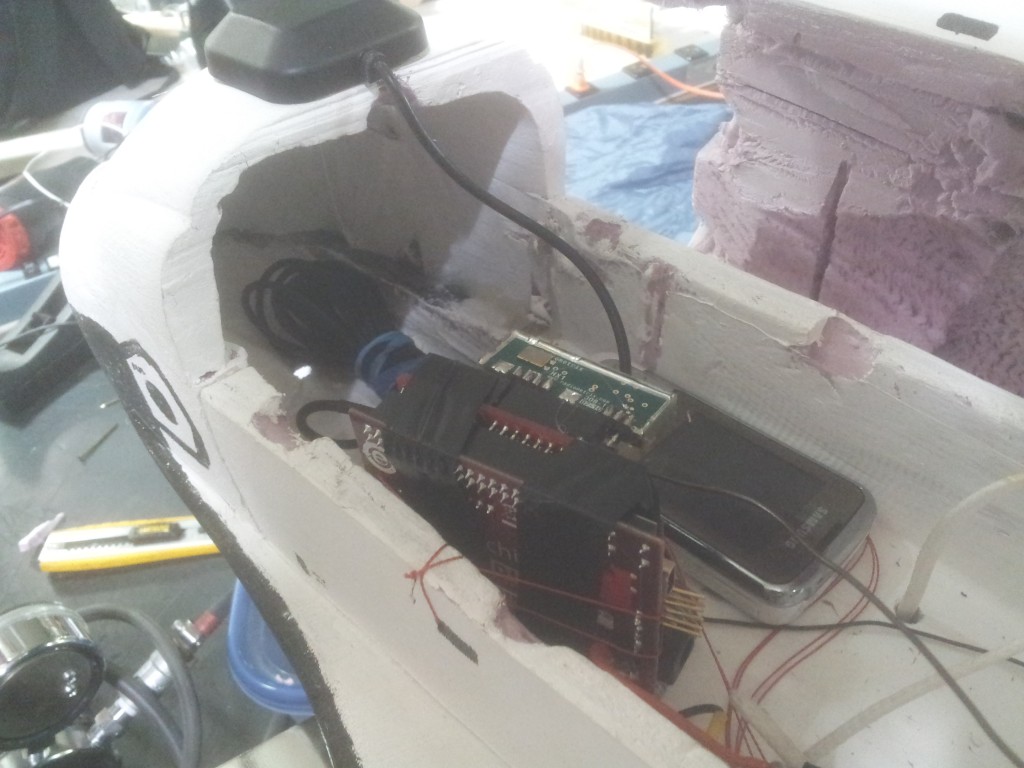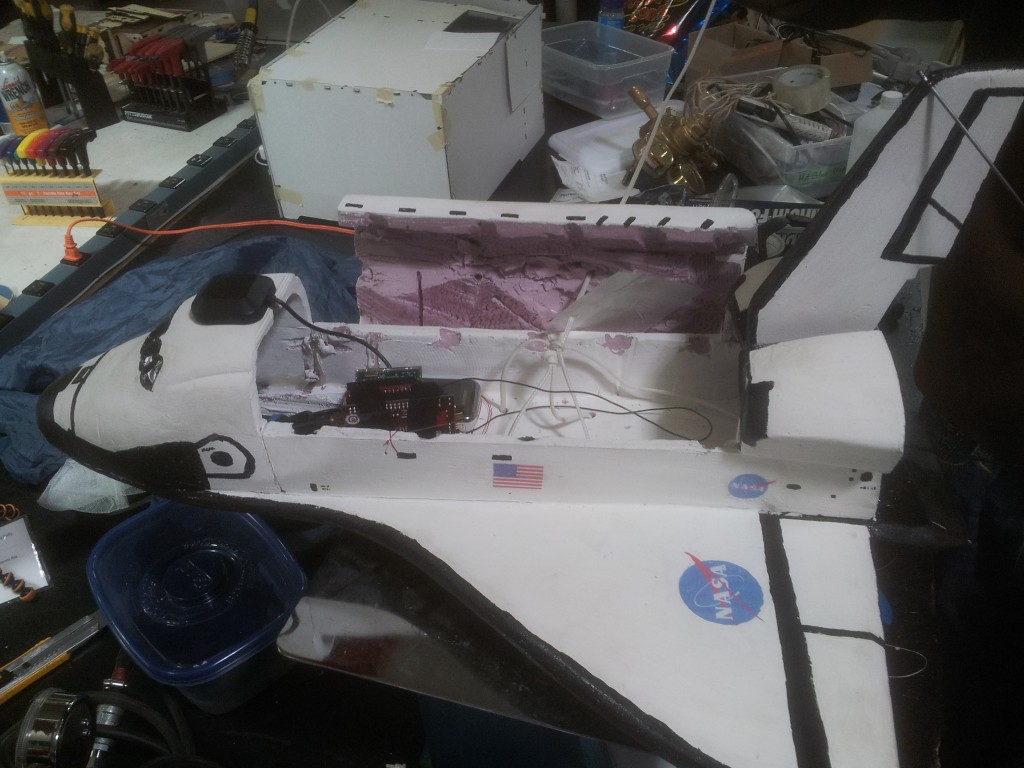Apollo67 had its third launch this weekend. Our goal was to test different hardware this time. Previously, we had problems with the cell phone because it lost signal quickly but then didn’t acquire signal at all or only after a long time after landing; it’s not a good solution for tracking a balloon in progress or reliable enough to find it after it lands. Our original plans called for only the cell phone because it’s technology that’s easily acquired, and indeed we continue to use it as our backup plan.
The experiment for this weekend used a Chipkit (an Arduino clone built on the Microchip line of microcontrollers) and an APRS module, which is short for Automatic Packet Reporting System. APRS is set up for exactly this sort of purpose. There are thousands of people around the world who have big antennas attached to computers that listen to a specific frequency for short bursts of data packets, and they report those bursts to the internet. We were able to launch our balloon using our APRS module, and knowing the call sign (kc9lau-11), we were able to use aprs.fi to help us track it with updates every 60 seconds.
Below are some highlight images, and a video of the entire flight, sped up and slowed down as appropriate.
Pre Launch
Issac spent a lot of time developing the APRS module and getting it to communicate with the Chipkit, but eventually got it working. The enclosure was one Jesse had built over a year ago and had been itching to put into near space. Todd contributed the GoPro. There was also a cell phone for recovery, a parachute for controlled descent, a mylar celebration balloon for radar reflection, and a GPS receiver chip. The local flower shop was gracious enough to open early for us and supply us with a partially filled balloon boot that celebrated a boot scootin’ birthday, so we had an appropriate level of celebration on our payload. The package weighed in at 1012 grams, not including the 300g balloon. After the firmware and hardware was complete, a quick drive around the Capitol verified that the APRS was working, and we were set for the next morning.
Saturday morning we arrived bright and early and checked weather, flight forecasts, battery life and other pre-flight items. We packed the car according to our checklist. We made a last minute addition of a mirror on a boom so that the GoPro facing out the back would be able to see the shuttle and the view in front of the shuttle.
Launch
By noon we were on the road to Platteville, and the clouds and rain stayed the entire time. We managed to find a gazebo to stage the preparation, though it somehow continued leaking and dripping even after the rain stopped. By now we’ve gotten comfortable with the procedure and the four of us were able to set up, prepare the payload, fill the balloon, and launch in reasonable time. We used a bottle filled with water to the same the lift weight we needed, and when the balloon could lift it we knew we had inflated it enough. It was about 8′ in diameter. We verified that the APRS beacon was working before releasing. Then slowly let the balloon up so that we were just holding the payload. This ensured that there was no slack and that the balloon wouldn’t just rip away from the payload when we released. The balloon quickly ascended into the clouds and we waited for the APRS signal to show up on the map. After a quick lunch, we started driving in the direction it was heading.

Jesse is wearing the helmet because it’s cold and raining, NOT because he’s carrying a tank of hydrogen gas.
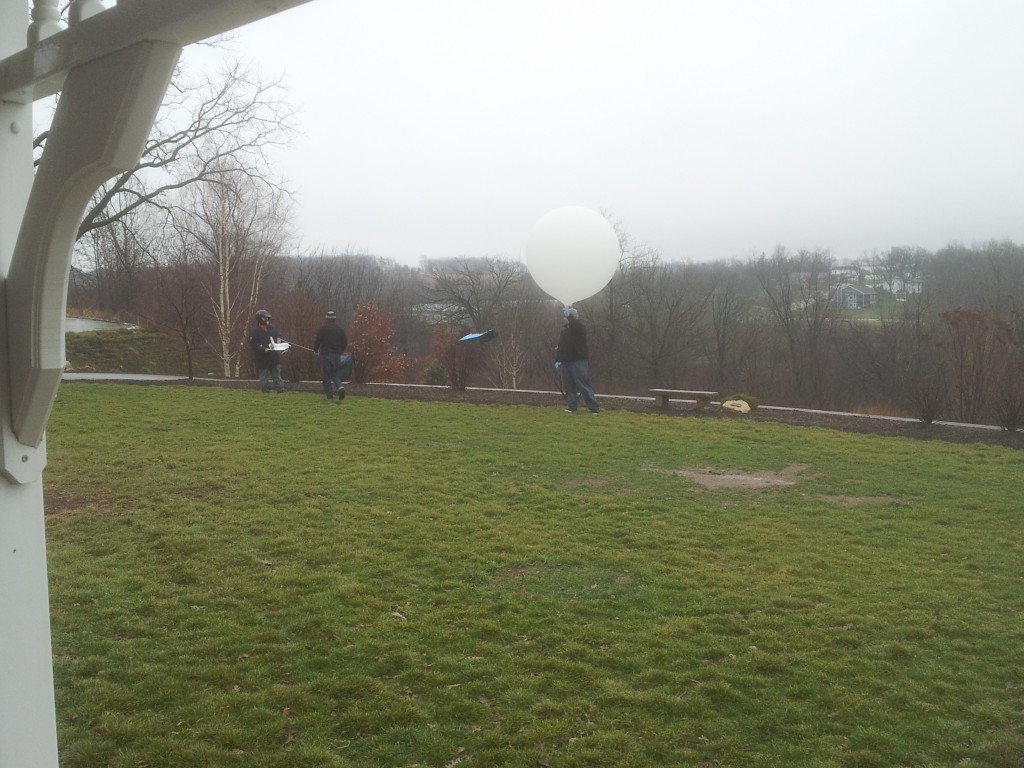
About to release the balloon.
Worry
As we drove, we at first thought it would end up West of Madison. Then it hit the jet stream and shot across the map far faster than we could drive. For some reason, the altitude wasn’t reporting correctly, so we had no idea when it would pop or if it was descending. We realized just how many lakes were directly in the flight path, and held our breaths each time it went over one, anxious for it to report a new location on the other side of the lake. When we were on the other side of Madison we decided to stop at Sector67 and unload our hydrogen tank and wait for it to land. At last, at 3:54, 2 1/2 hours after our 1:30 launch (and a full 40 minutes longer than our estimated flight time), we stopped getting updates. The cell phone, however, only rang once and then was no longer available. Because we didn’t have any more updates from the APRS, we didn’t know if it had stopped reporting or had gone below a certain point where it wasn’t being picked up anymore. Further, it was getting dark.
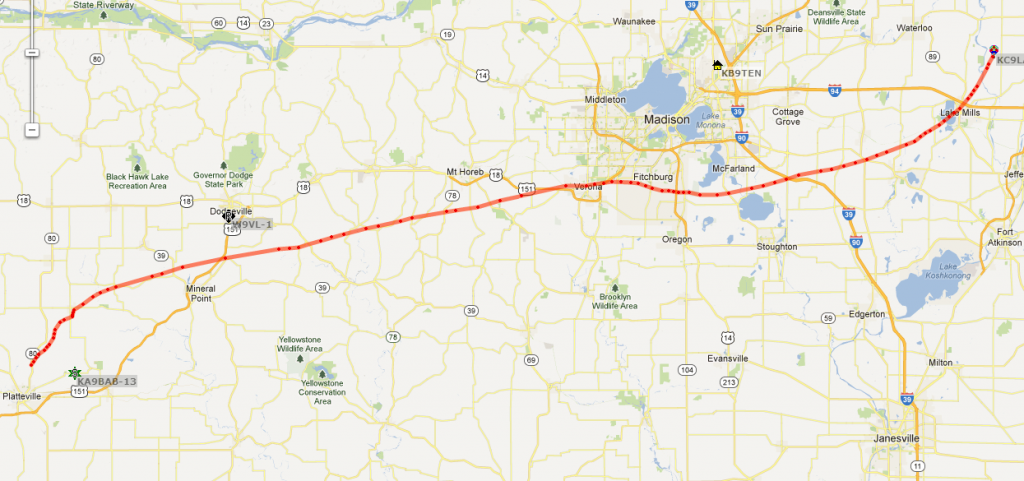
When we arrived at the site of the last known location, it was already dark. We started looking and tromping through the field, but we didn’t know where exactly it was, and we didn’t have great visibility, and it started raining and snowing. Eventually, we had to give up.
Recovery
Sunday morning the recovery team returned to the site to continue looking. The funny thing about day time is that you can see a lot more; the package was in the field we were searching, but in a far corner that we had just missed. It was in surprisingly good shape, though the nose had taken a beating and separated. Data from the GoPro was fantastic, and we were able to compile the following video.
Post Analysis
We are completely comfortable with the hydrogen gas now. It is not intimidating to us and has not been a problem in any of our launches. We are getting better at launching. The APRS system worked, although next time we will need to do a better job with the altitude. Knowing that would have helped our tracking and recovery a lot.
We are also developing tools for finding a balloon using a ground based receiver so that when we get close we will be able to get its signal even if other stations can’t. This should help us find it even without seeing it.
We need to launch earlier in the day. A 1:30 launch gave us no time to find the package before it got dark.
The GoPro was a great addition to the package, and gave great stills as well. It’s heavy and expensive, but definitely made for a great result.
The mirror at the end of a boom was cool and gave us multiple angles with only one camera and no risk of having anything valuable at the end of the boom.
The space shuttle was remarkably stable and looked awesome.


